Bioinformatics News
Perspective: Small molecules as players in targeted therapies

As the Centers for Disease Control and Prevention points out, breast cancer in the USA, and Not counting some kinds of skin cancer, is the most common cancer in women, irrespective of race or ethnicity. The second most common cause of death from cancer among white, black, Asian/Pacific Islander, and American Indian/Alaska Native women. Sill in 2015, 224,147 women and 2,125 men in the United States were diagnosed with breast cancer and 41,150 women and 405 men in the United States died from breast cancer. The only way to prevent and cure cancer is through innovative research. The way our group thought of doing it is by designing small molecules as in targeted therapies. The concept and the technique, nowadays, is highly endorsed by the American Association for Cancer Research and is seen as a radical improvement over traditional.
Targeted therapies or rational drug design is normally based on the knowledge of the three-dimensional spatial arrangement of the protein molecular complex and structural analyses of receptors/targets provide us with an effective tool for the development of disease therapeutics. The general notion about targeted therapies is that they are expected to be more effective than current treatments and do not so much impact normal cells. Several therapies based on mechanisms that target critical checkpoints in signaling pathways, progression from normal to tumorigenic cells are gaining more traction. In the last couple of decades, the US Food and Drug Administration (FDA) has approved more than a dozen monoclonal antibodies (mAbs) to treat certain types of cancers. Clinical trials of newer mAbs are now being done on many types of cancer. While many pharma giants compete with each other for their first-in-line immunotherapeutic products, patient safety and health should be monitored for a longer term to determine how each of these drugs far in progressing survival rates over conventional methods like chemotherapy.
Nevertheless, mAb-based immunotherapy together with molecular innovation and potent target discovery are here to stay for the next generation of diagnostics and personalized medicine. In my previous life as a structural bioinformatician, I was investigating antibodies reactive to tumor-associated carbohydrate antigens that play a major role in many metastatic cancers. Neo-carbohydrate antigens are chemical aberrations found on the cell surface of many tumors like breast, lung, prostate etc. Our findings change the older notion of antibody recognition in our body. Antibodies reactive against these neoantigens follow a different developmental pathway. They mostly proceed via the Thymus cell independent pathway in contrast to the what we find in immunology textbooks. For antibodies against Thymus cell-dependent antigens, the acquisition of high reactivity to antigens is known to proceed via antigen-driven evolution based on somatic hypermutation (mutational changes in the somatic cells of our body) [1].
We have shown here that mother antibody cells or the germline Lewis Y reactive B cells yield higher affinity clones as a result of a somatic diversification. The B cells or the B lymphocytes are responsible for antigenic recognition. The germline antibody (precursor antibody) is preformed to recognize salient structural fragments of the carbohydrate antigens. Accumulating discrete mutations in their structure as part of diversification has only recently been addressed. This mutational process yields high probability clones that accommodate better fine structures of the antigen fragments. This reflects a strategy different from the classical theory of antibody maturation. This study highlighted the occurrence of thymus-independent antibody related to a single precursor family which is a first of its kind. Thus, as our knowledge about the structural details of antibody-antigen interaction broadens, we may be able to design better antibodies, as well as design improved antibody-based vaccines through more refined reverse-engineering concepts based on the knowledge of antibody structural plasticity and specificity, paving the path towards improved immunotherapy for cancer patients.
As an obvious next step towards developing a small molecule therapeutic, I was involved in the development of a peptide referred to as p109/P6 that function as an antigenic mimic of the Lewis Y (carbohydrate antigen) as p109/P6 binds to an anti- Lewis Y antibody. Molecular modeling indicates that the peptide sequence should contain certain amino acid types like Arginine, Tyrosine, Tryptophan, and Serine that are found to interact with saccharide units. I have exploited these structural rules to predict the kinds of structural conformation these peptides will adopt as carbohydrate mimics. This is a key concept utilized to design immunogenic agents to induce an anti-carbohydrate cross-reactive response that can overcome the problem of low titer values when carbohydrate antibodies bind to these pathogens. The peptide clearly combines the advantages of antibodies and small molecules that induce inhibition of cell adhesion and cell aggregation [2] presumably through interactions with cellular receptors, at the same time being proapoptotic in nature when targeted against carbohydrate antigens [3]. The unique advantage in targeting carbohydrate antigens by mimetic peptides is that multiple proteins and lipids on cancer cells can simultaneously be modified with a singular carbohydrate structure. Thus, targeting carbohydrate antigens broadens the spectrum of antigens recognized by the immune system.
References
- Saha S, Pashov A, Siegel ER, Murali R, Kieber-Emmons T. Defining the recognition elements of Lewis Y-reactive antibodies. PLoS One. 2014;9(8):e104208.
- Glinsky VV, Huflejt ME, Glinsky GV, Deutscher SL, Quinn TP. Effects of Thomsen-Friedenreich antigen-specific peptide P-30 on beta-galactoside-mediated homotypic aggregation and adhesion to the endothelium of MDA-MB-435 human breast carcinoma cells. Cancer research. 2000;60(10):2584-8.
- Kieber-Emmons T, Luo P, Qiu J, Chang TY, O I, Blaszczyk-Thurin M, et al. Vaccination with carbohydrate peptide mimotopes promotes anti-tumor responses. Nat Biotechnol. 1999;17(7):660-5.
Disclaimer: The views in this article are that of the author’s alone and not necessarily endorsed by GlaxoSmithKline(GSK)Plc.
Bioinformatics News
Proteins shape analyses reveal novel forms and connections.

A new study has revealed new forms of proteins that have never been seen before along with unexpected connections. Last year, Google DeepMind predicted the structure of all known proteins from organisms using AlphaFold [1].
Bioinformatics News
What is MANE project?

MANE is a collaborative project between NCBI and EMBL-EBI. It stands for Matched Annotation from NCBI and EMBL-EBI [1]. The datasets provided by NCBI and EMBL-EBI on the human genome are not identical across every gene.
Bioinformatics News
This Month in Bioinformatics- Research Updates of March 2022

Here are the latest research developments in the field of bioinformatics made in the month of March 2022. (more…)
Bioinformatics News
This month in Bioinformatics- Research Updates of November 2021

We summarize the latest research published this month in the field of bioinformatics. (more…)
Bioinformatics News
This Month in Bioinformatics- Research Updates of October 2021
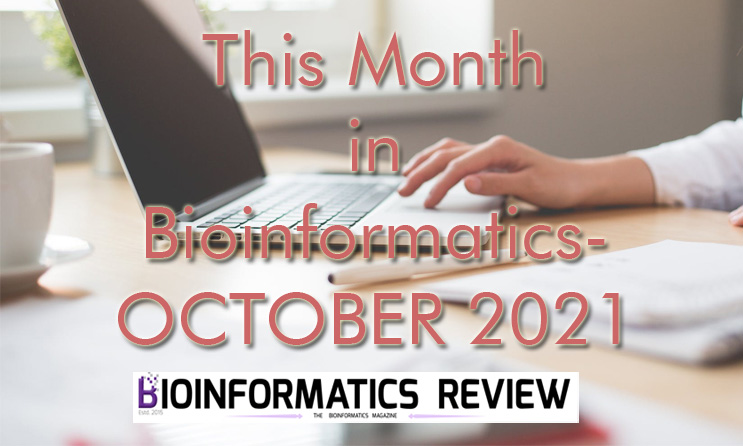
In this article, we summarize the latest interesting findings made this month in bioinformatics. (more…)
Bioinformatics News
BLAST+ 2.12.0- A more efficient version of BLAST is available
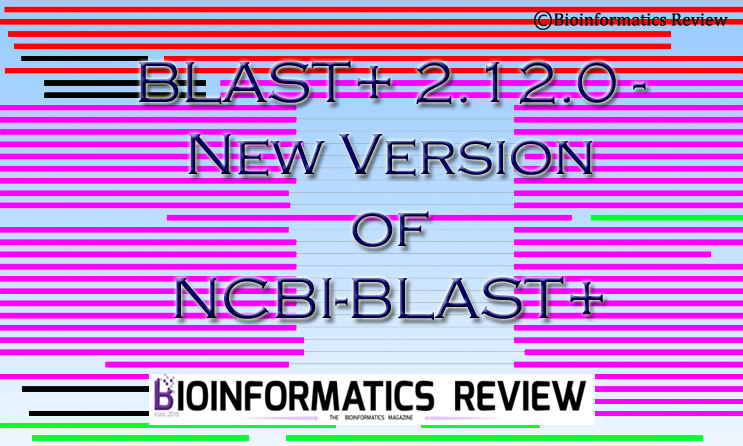
A new more efficient version of BLAST+ 2.12.o is available now [1]. This version provides more efficient multithreaded searches. (more…)
Bioinformatics News
This Month in Bioinformatics- Research Updates of June 2021

In this article, we summarize the latest interesting findings made this month of June in bioinformatics. (more…)
Bioinformatics News
This Month in Bioinformatics- Research Updates of May 2021
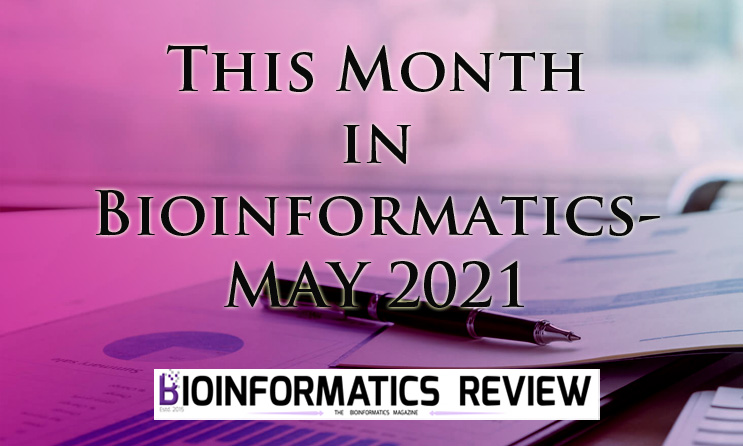
In this article, we summarize the latest interesting findings made this month in bioinformatics. (more…)
Bioinformatics Research Updates
This Month in Bioinformatics- Research Updates of April 2021

In this article, we summarize the latest interesting findings made this month in bioinformatics. (more…)
Bioinformatics News
This Month in Bioinformatics- Research Updates of March 2021

Here, we summarize the latest interesting findings made this month in bioinformatics. (more…)
Bioinformatics Research Updates
This Month in Bioinformatics- Research Updates of February 2021

We summarize the research done in bioinformatics in the month of February. (more…)
Bioinformatics Research Updates
This Month in Bioinformatics- Research Updates of January 2021

In this article, we summarize the main findings made in bioinformatics this month. (more…)
Bioinformatics News
This Month in Bioinformatics- Research Updates of December 2020
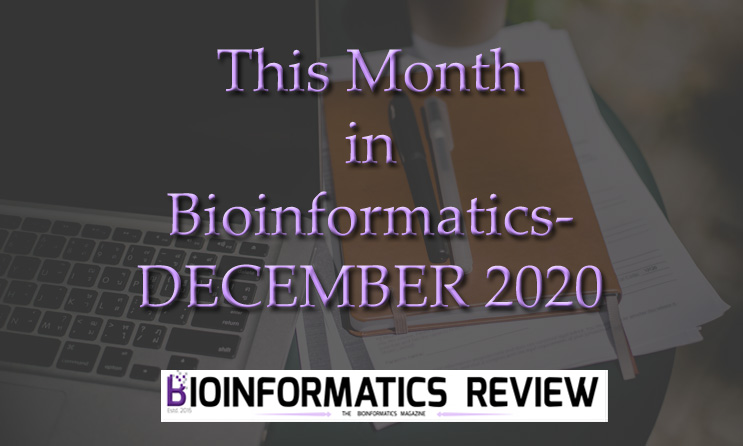
In this article, we summarize the latest research in bioinformatics published this month. (more…)
Bioinformatics News
Join Bioinformatics Review Research Group

We are going to lead a few bioinformatics research projects. For that, we are creating a new research group of Bioinformatics Review. (more…)
Bioinformatics News
This Month in Bioinformatics- Research Updates of November 2020
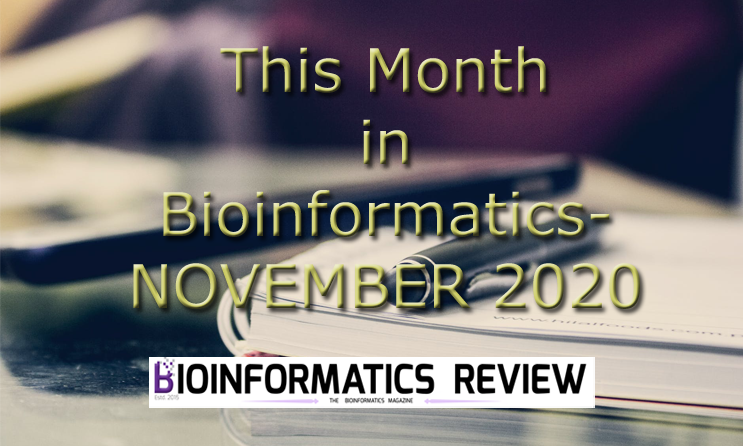
In this article, we summarize the latest research in bioinformatics published this month. (more…)
Bioinformatics News
This Month in Bioinformatics- Research Updates of October 2020
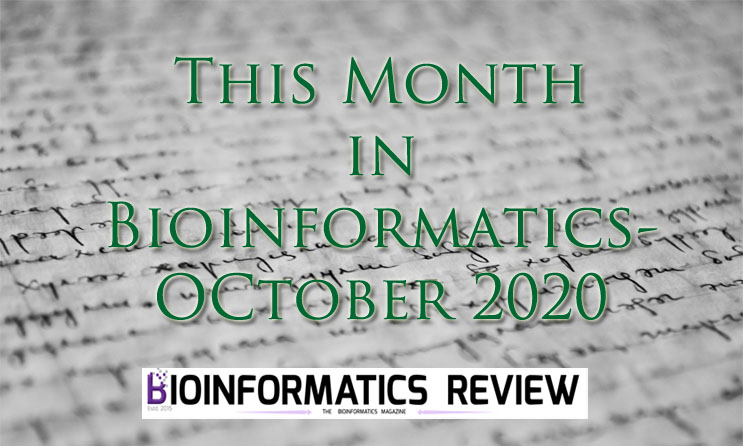
Some of the important findings made this month in bioinformatics are mentioned in this article. (more…)
Bioinformatics News
This Month in Bioinformatics: Research Updates of September 2020
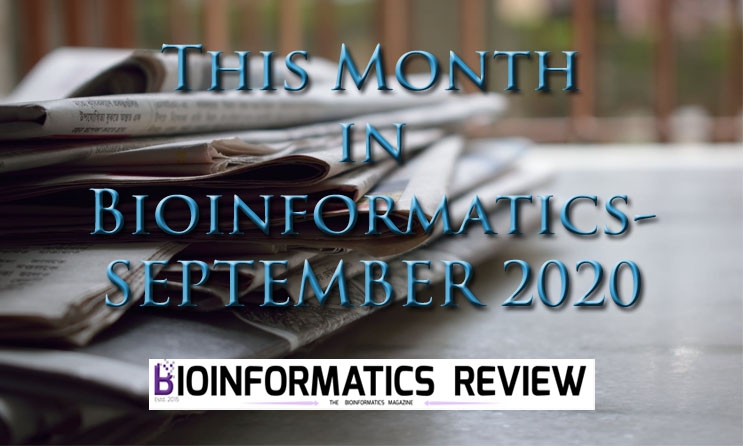
Some of the important findings made this month in bioinformatics are mentioned in this article. (more…)
Bioinformatics News
This Month in Bioinformatics: Research Updates of August 2020
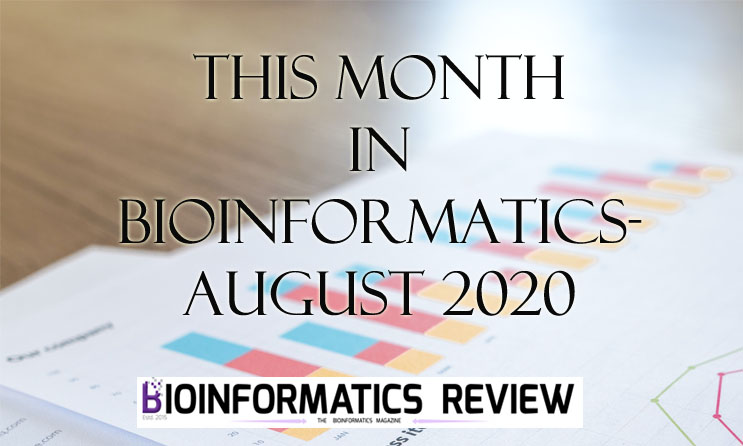
Some of the important findings made this month in bioinformatics are mentioned in this article. (more…)
Bioinformatics News
This month in Bioinformatics: Research Updates of July 2020
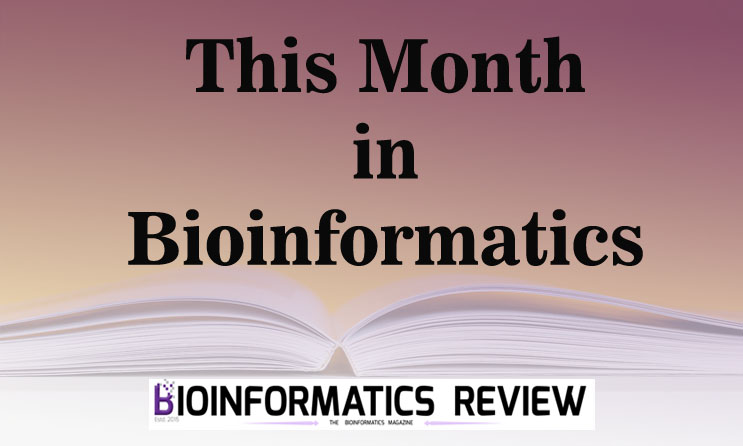
Some of the important findings made this month in bioinformatics are mentioned in this article. (more…)
Bioinformatics News
Inviting Nominations for ‘Top 5 Bioinformaticians in India 2020’
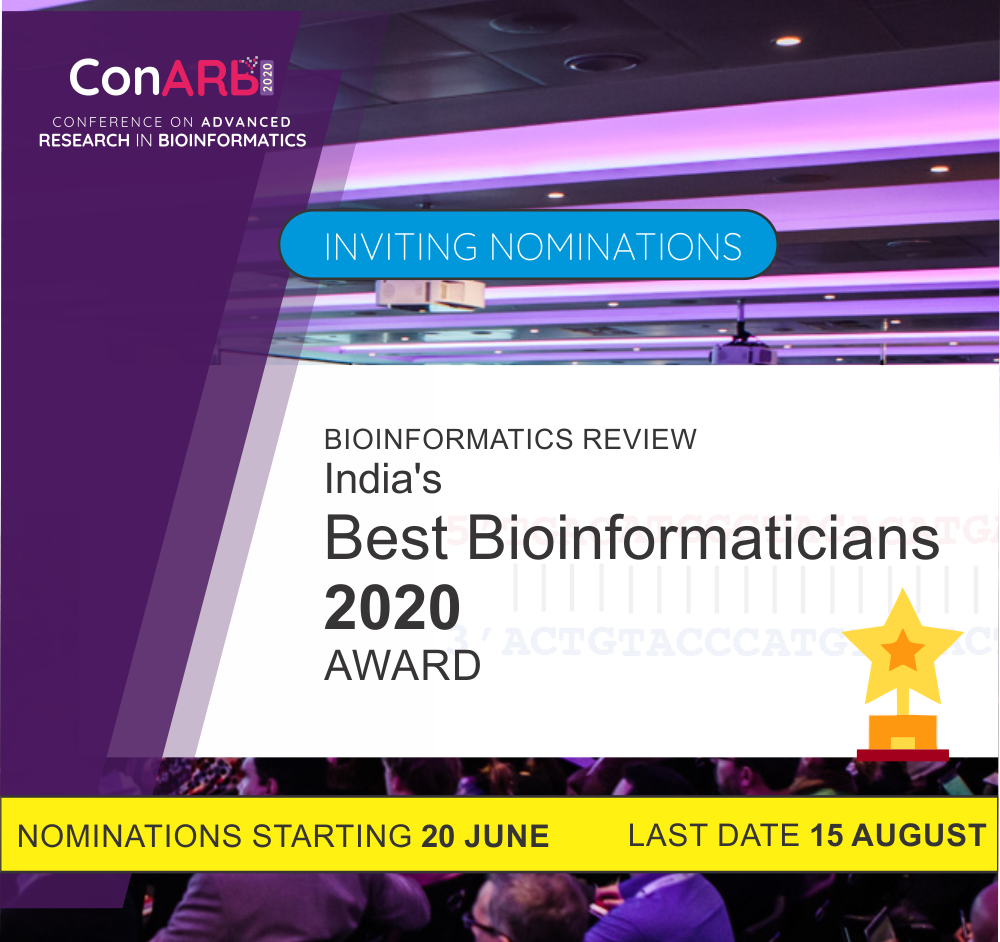
Bioinformatics Review compiles a list of top bioinformaticians every two years. We are inviting nominations for the second edition of this award after the 2018 List. We invite you to contribute to this endeavor by nominating your colleague or friends if you think they can make it to our list.
Nominations start from 20th June 2020 till 15th August 2020. All the nominees will be informed via email on 5th September 2020. We use a well-established ranking method called ScipRank. Our data collection is open-source. ScipRank methodology is publicly available for scrutiny.
Also, we are completing 5th year of success in Bioinformatics Review this year. On this occasion, we are organizing an International Conference on Advanced Research in Bioinformatics 2020. The award will be declared at the conclusion of ConARB 2020 – 3 & 4th Oct 2020).
We invite you to contribute to this endeavor by nominating your colleague or friends. You can also submit your papers, which if accepted, can be presented at the conference.
We have set up a dedicated portal for ConARB 2020 accessible here https://conarb.
To attend or to submit your abstract or to nominate someone, kindly visit this website. Accepted papers will be published in a special issue of Bioinformatics Review.



You must be logged in to post a comment Login